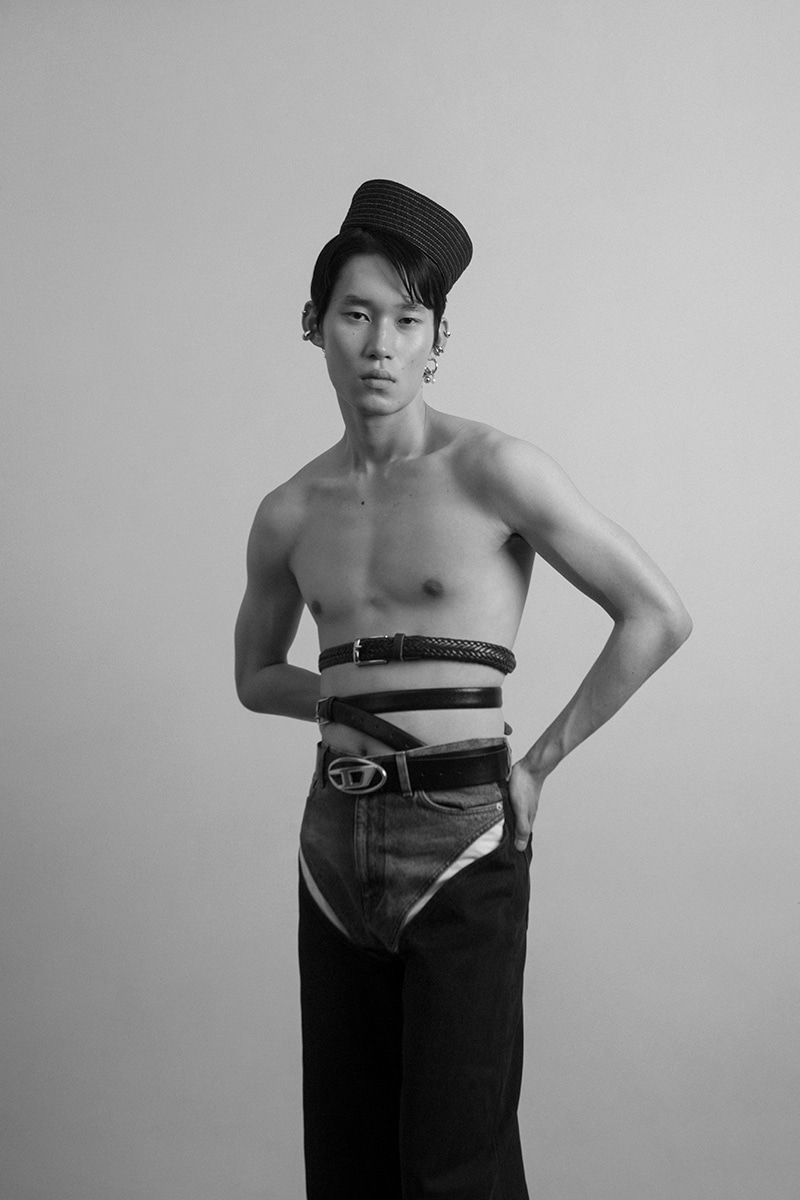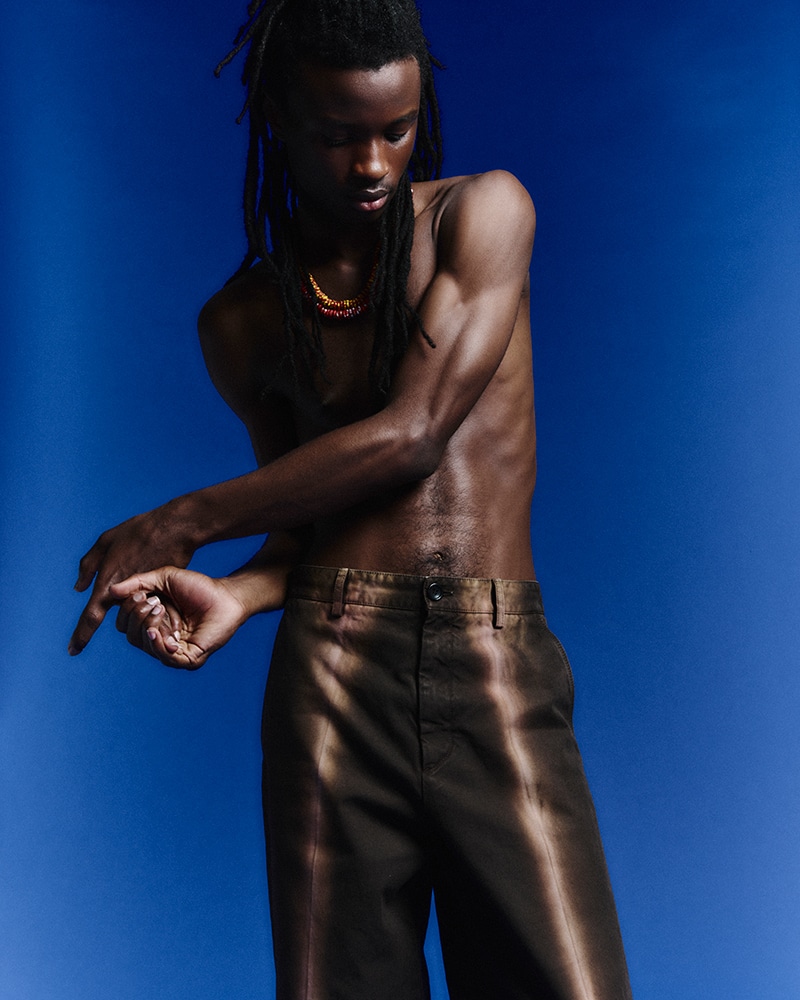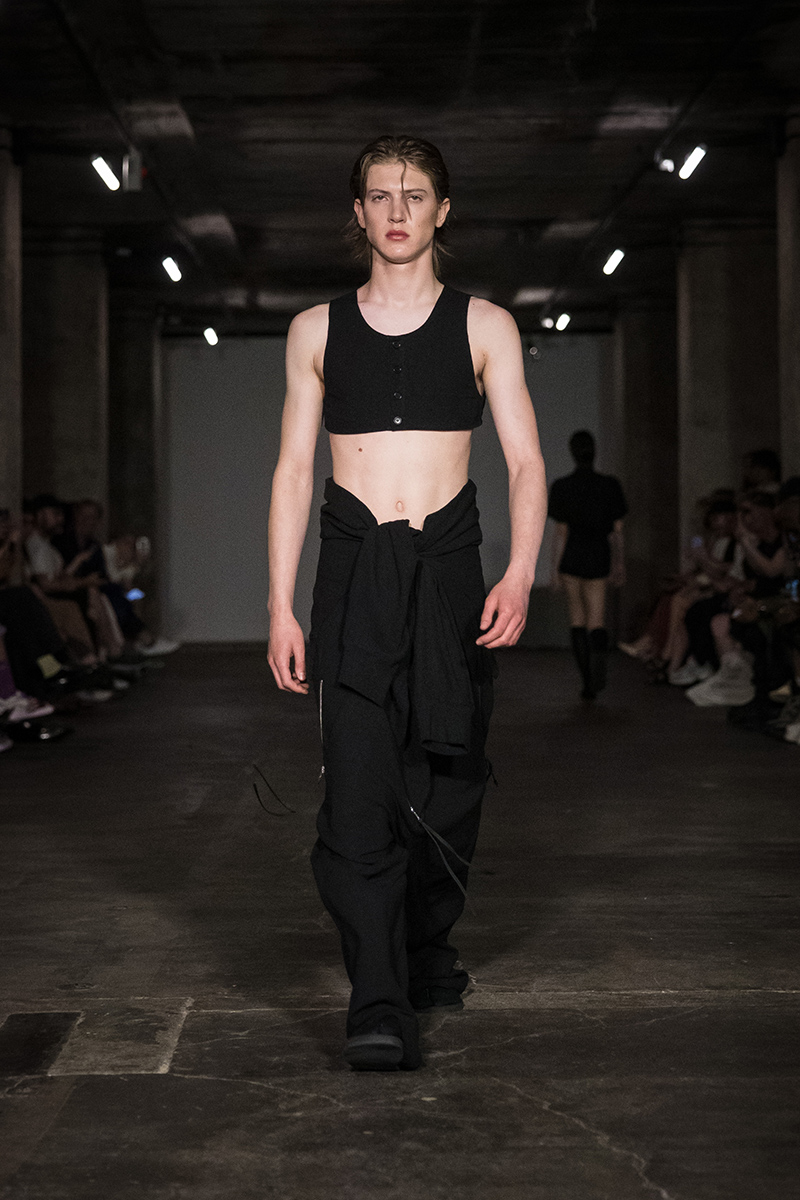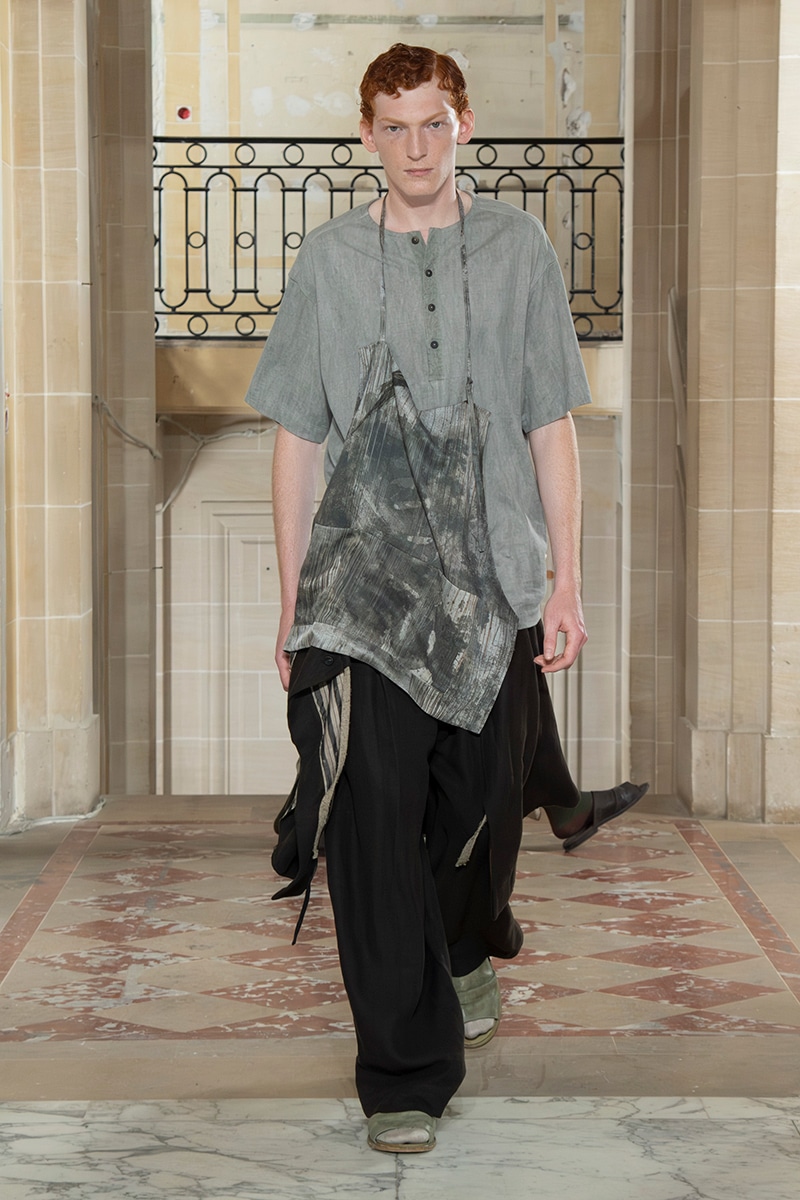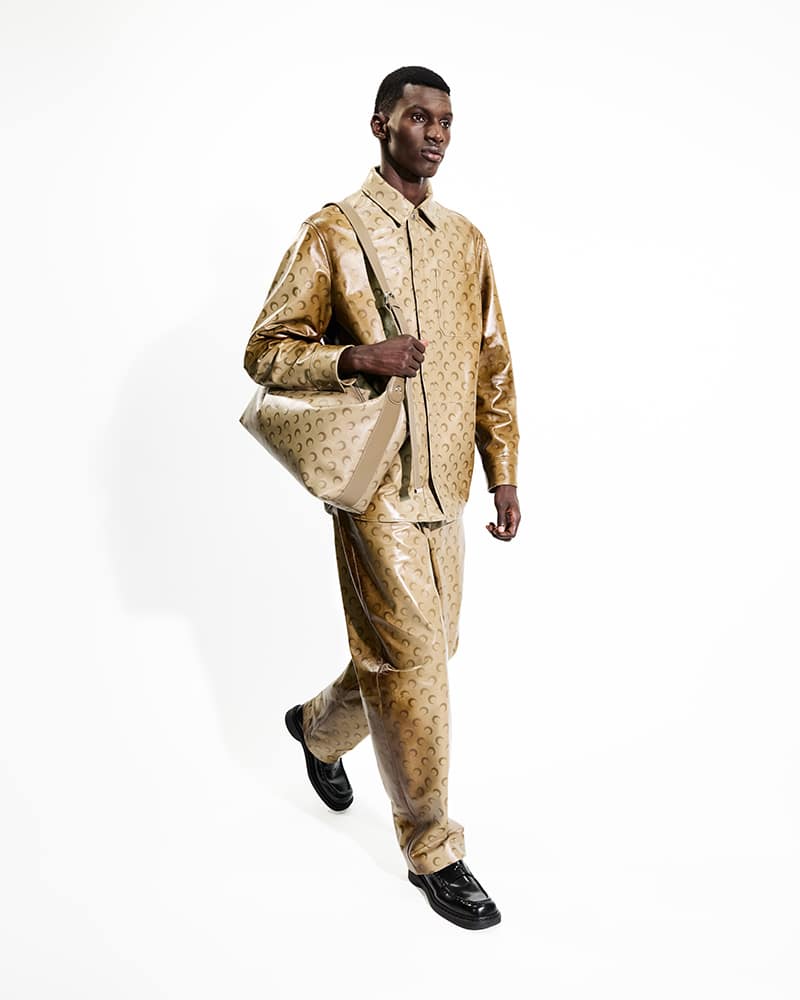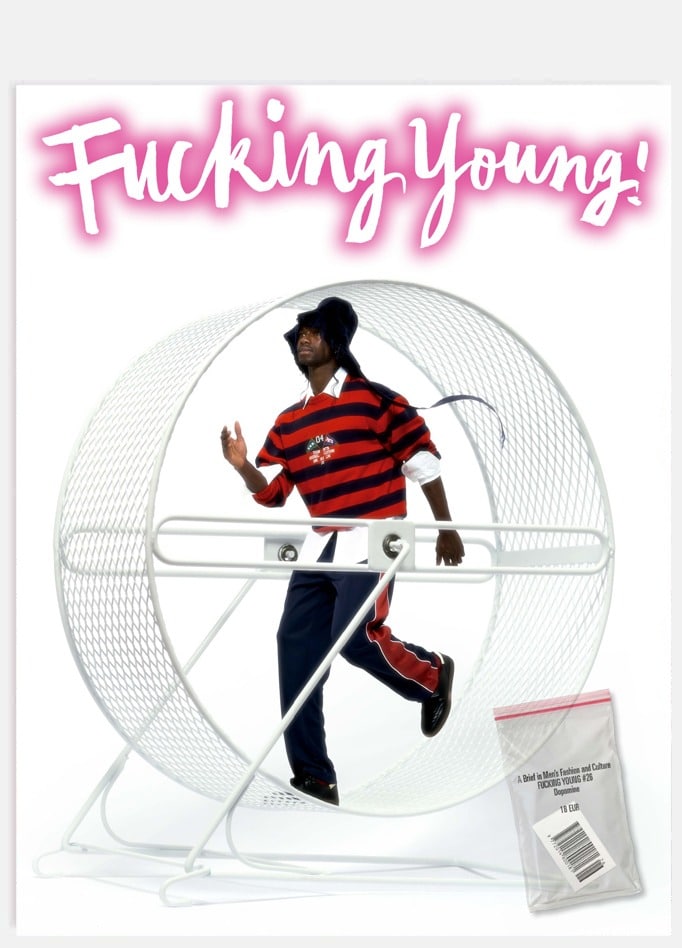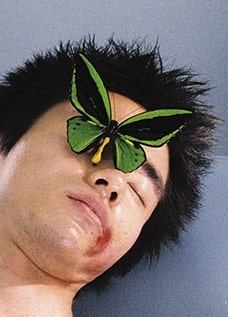Mai Gidah Fall/Winter 2016 Lookbook
by Adriano Batista






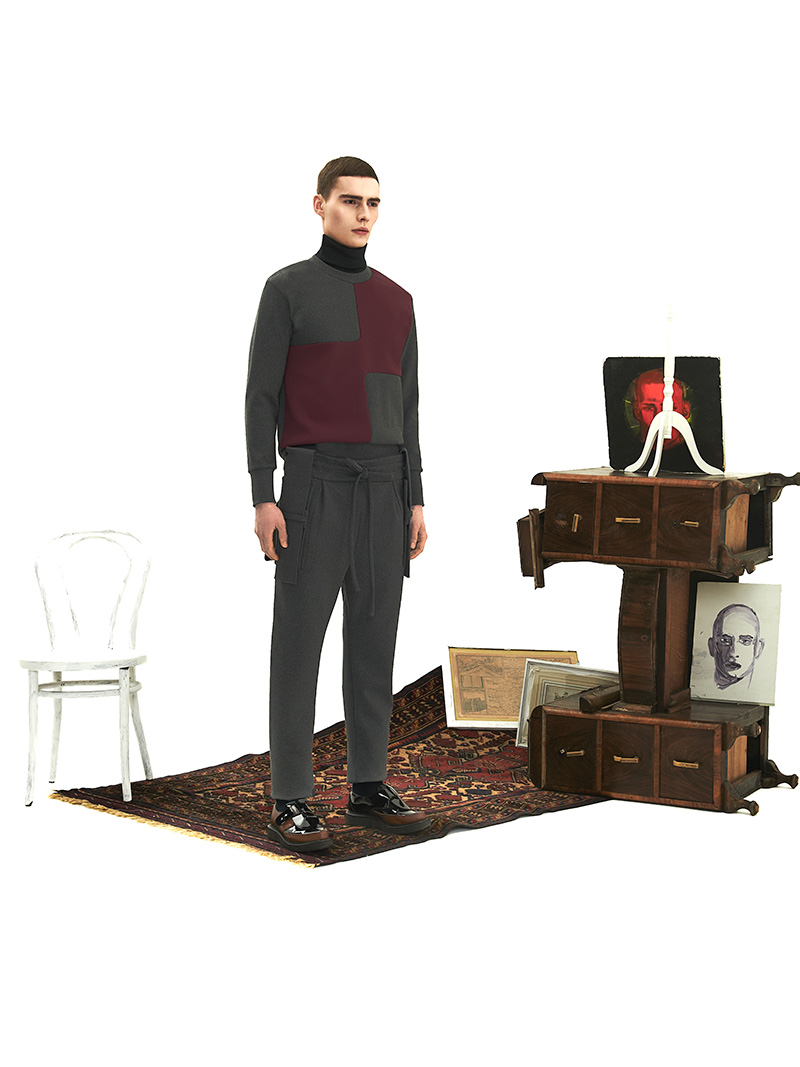









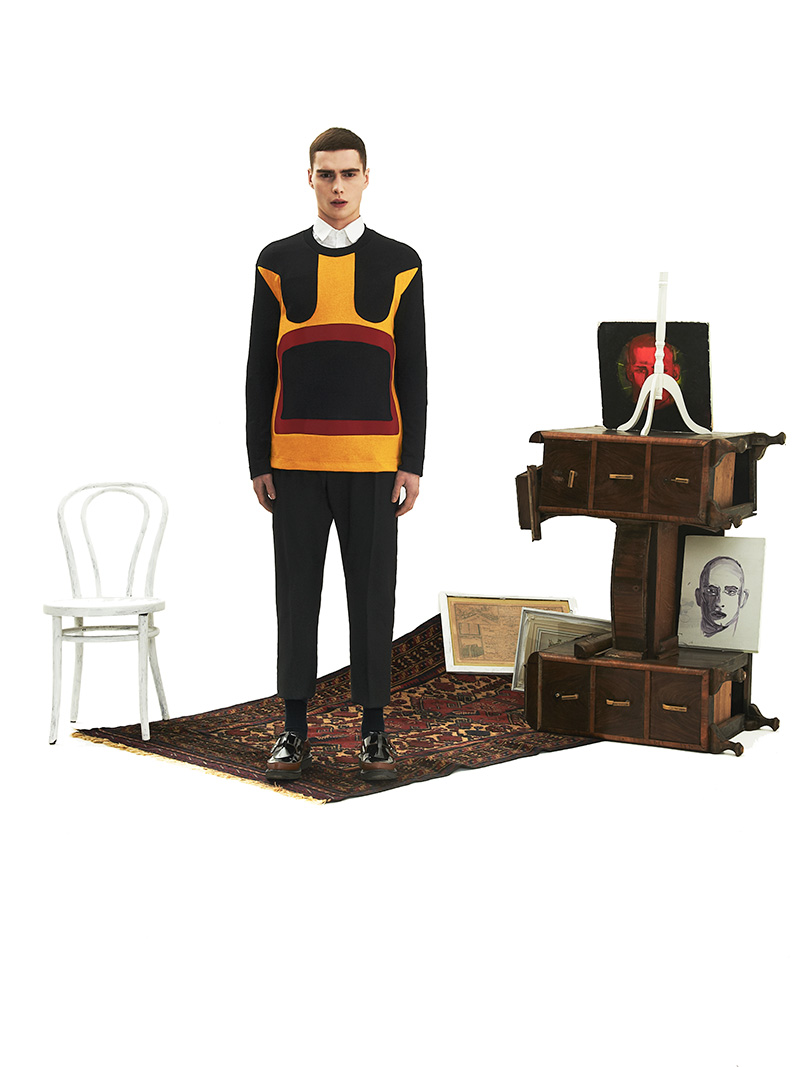





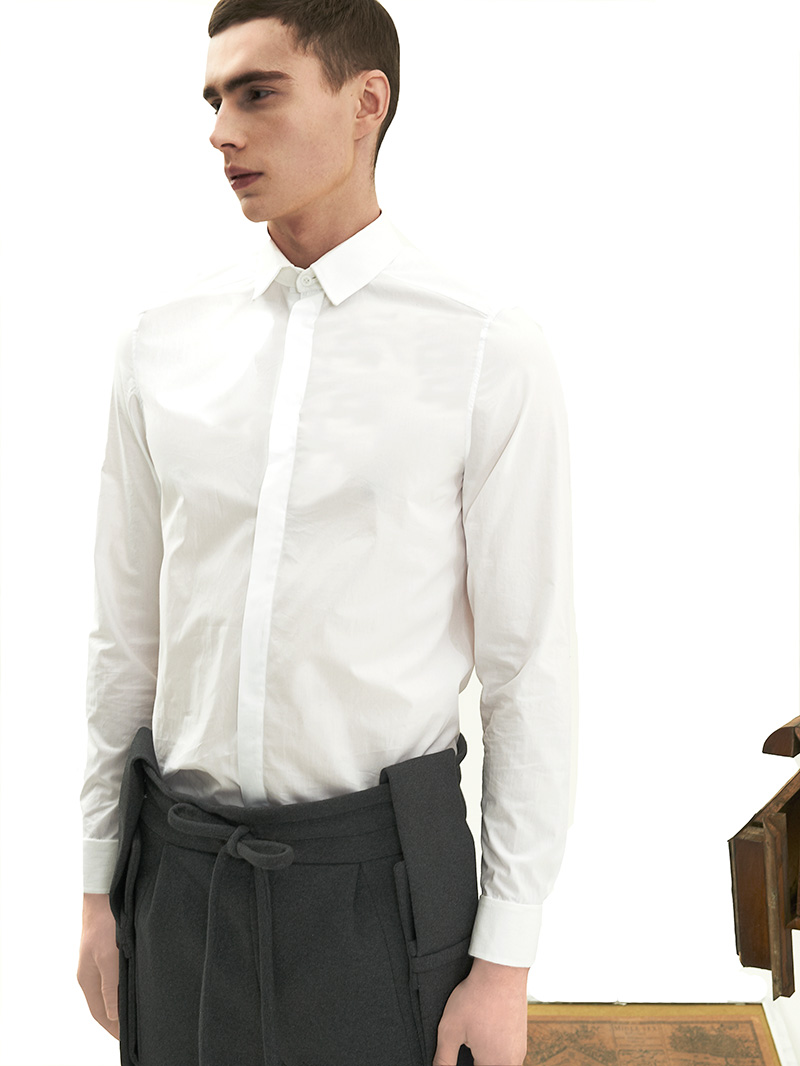
Fall/Winter 2016 bring Ochre, Auburn and mud-colours to the Mai Gidah pallet exploring the underlying tones of the spectrum of colours found in Flemish Primitive paintings by Van Eyck, Petrus Christus, Van der Weyden and their contemporaries.
Expanding the notion of Keepsakes & keeping safe by adding ever more pockets and layers to coats and trousers. The same idea is applied to jumpers & shirts.
Inspired by the wearing of protective amulets by the Dagombe tribe in Ghana and the keeping of memorabilia as a way of protection has inspired Mai Gidah to investigate the use of pocketing. The traditional dance performed by the Dagombe is reflected in the panels of coats.
The silhouettes have softness but a boldness too mirroring and translating the 15th century dress codes. Replacing the ermine and silk velvet of the time with wool and technical fabrics. The length of the coats is the exact same as the length of the coats worn in the Arnolfini portrait. The Burgundy red is a clear reference to the turban worn by Van Eyck himself in the self-portrait.
A jacket & jumper with the harness of a 20th Century dungaree finds origin in the clothes donned by many workmen. The workwear counters the elitist nature of the subjects of the Flemish primitive-paintings.
Through out all the garments remains the African heritage of the designer. Intricately interweaving both European and African influences until they can no longer be told apart. As an outsider looking in it would seem Mai Gidah is fine tuning and evolving the strengths from previous collections making for an outspoken and mature AW16.
Through out all the garments remains the African heritage of the designer.
Knitwear is introduced and for the first the time the collection features two knitted pieces. The merino-wool jumpers depict a double-faced woman. She could be a 15th century noblewoman painted by Van Eyck or an African Princess depicted in a n Ashanti bronze statue.
Little slit-pockets, belts and oddly placed double-pockets are also a reference to the humor artist’s use in their artwork. Such as the “Johannes Van Eyck Fuit Hic” (Van Eyck was here) inscription on the wall of the Arnolfini-portrait it’s recognition of the viewer & spectator, for those in the know but also a funny footnote in art-history.
STREETSTYLE | London Collections Men FW16 – Part 4
Don’t Call Me White
Paris Fashion Week witnessed Steven Passaro’s Moonlit Lover Spring/Summer 2026 collection, an exemplar of the aftermath of love encountered after midnight and gone before sunrise.
Because home should never be denied to anyone. In a world where home shouldn’t be a privilege but a right, artist and activist Charlie Smits is stepping up. Smits has teamed up with Fundación… »
Simon Porte Jacquemus has fulfilled his dream, and in the process, he continues to invite us to dream with him.
We checked in with Takuya Morikawa to talk process, evolution, and the foundation in the essence of creation.
Berlin Fashion Week saw the return of Milk of Lime, fresh off their Berlin Contemporary win, with their Spring/Summer 2026 collection, CHIME.
Craig Green’s Spring/Summer 2026 collection feels like a half-remembered dream with shapes you recognize, but shifted just enough to make you look twice.
Photographer Denzil Jacobs presents a selection of eclectic looks photographed on the streets of Paris during Men’s Paris Fashion Week, outside Amiri, Rick Owens, 3.Paradis, Kidsuper and more, exclusively for Fucking Young!
Ikko Ohira photographed by Luis May and styled by Timothée Geny La Rocca, in exclusive for Fucking Young! Online.
At Paris Men’s Fashion Week, NAMESAKE’s Spring/Summer 2026 collection, INNERCHILD, didn’t just show clothes but also memories.
Designer Andrea Pompilio maps a wardrobe for modern nomads, one that looks collected rather than curated.
Louis Vuitton has always been about journeys, both literal and imaginative.
VIKTORANISIMOV chose an unlikely stage for its first Berlin Fashion Week presentation: a former telecommunications bunker, now The Feuerle Collection museum.
After the show, designer Feng Chen Wang caught up with us, to open up about the emotion behind this collection, and the brand’s evolving identity – accompanied by backstage moments captured by Leiya Wang.
Take a look at DOUBLET’s Spring/Summer 2026 backstage, captured by the lens of Rita Castel-Branco during Paris Fashion Week, in exclusive for Fucking Young!
Take a look at KIDSUPER’s Spring/Summer 2026 backstage, captured by the lens of Tiago Pestana during Paris Fashion Week, in exclusive for Fucking Young!
For Camiel Fortgens’ SS26, models walked the actual streets of Paris during Fashion Week, portable speakers in hand, each playing a fragment of the show’s soundtrack.
Singer-songwriter HUMBE is Mexico’s breakout pop star, leading us into a new era of sentimental pop.
Created with artist Samuel de Sabóia, the lineup weaves together regeneration, spirituality, and a question: What does the future of fashion look like?
ZIGGY CHEN’s PRITRIKE doesn’t shout. It hums like the low, steady pulse of rain on summer earth.
For their SS26 show, the adidas and Yohji Yamamoto collaboration traded the standard runway for something more visceral: a four-act performance directed by choreographer Kiani Del Valle.
After showing off-calendar for two seasons in a presentation format, the 2023 LVMH Prize-nominated designer Kartik Kumra is now the first Indian designer to be on the official menswear calendar.
SANKUANZ’s Spring/Summer 2026 collection finds its heartbeat in Tara, the Tibetan Buddhist goddess who exists between two worlds, both enlightened and earthly.
Creative director Julian Klausner builds his first men’s collection for the house like a love letter to contradictions.
Fashion often pretends to have answers. TAAKK’s Spring/Summer 2026 collection prefers questions.
Doublet doesn’t ask you to change the world. It just shows what happens when fashion remembers where it comes from.
The idea is simple but clever: take the rigid codes of a gentleman’s wardrobe and soften them for the heat.
For SS26, Hung La’s LỰU ĐẠN closes its trilogy “MAYHEM,” “YOU DON’T BELONG HERE,” and now “NO MAN’S LAND”, with a collection that stares straight at the people society ignores.
Marine Serre‘s Spring/Summer 2026 collection is about the quiet revolution happening in every stitch. Titled THE SOURCE, this is clothing that moves with purpose, crafted by hands that treat savoir-faire not as a relic, but as rebellion.
Here,… »
When J Balvin puts his name on something, you know it won’t be ordinary.
C.R.E.O.L.E.’s DOM TOP FEVER collection is a reckoning. It digs into displacement, memory, and the act of reclaiming stories that have been buried or distorted.































